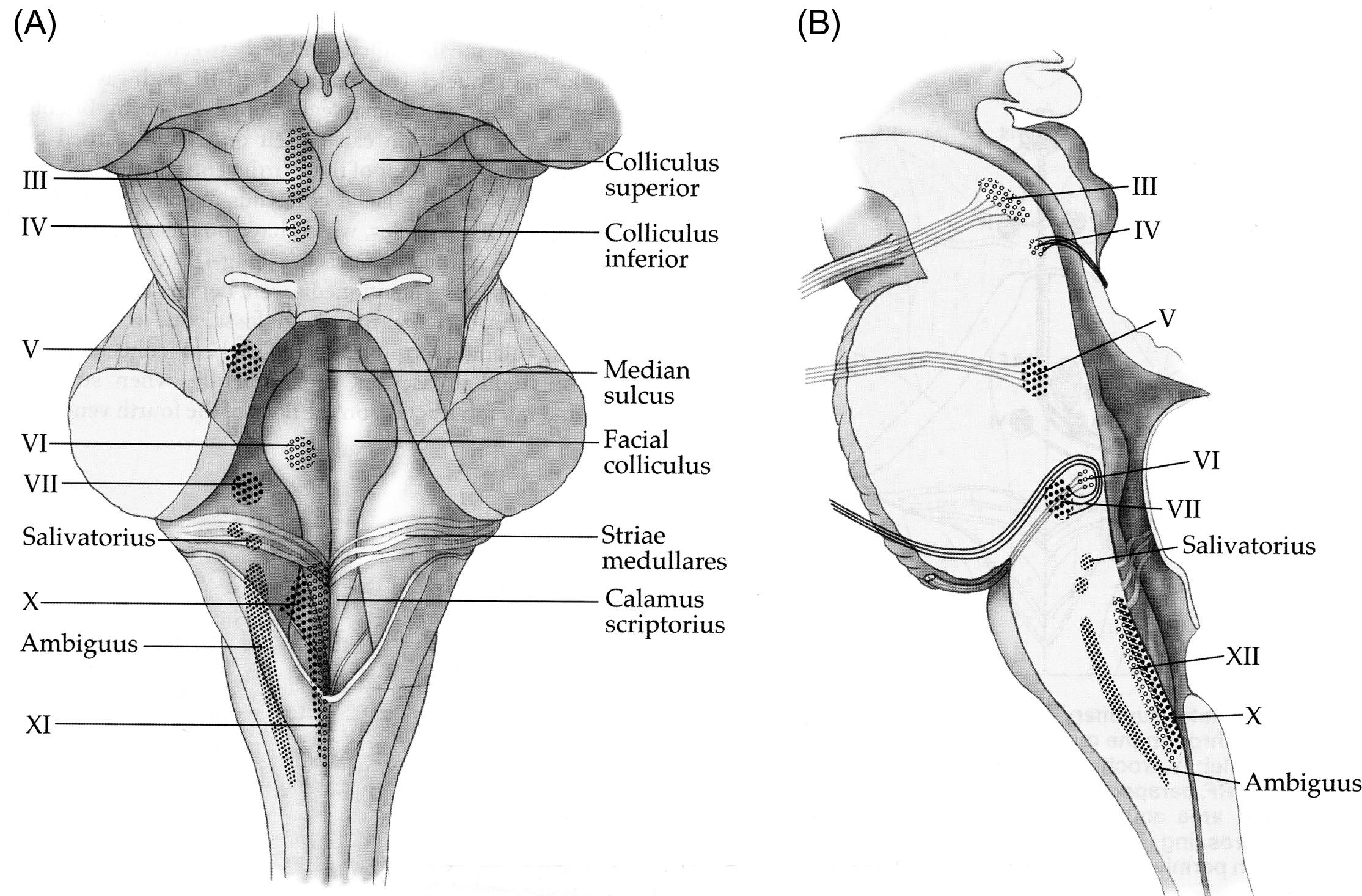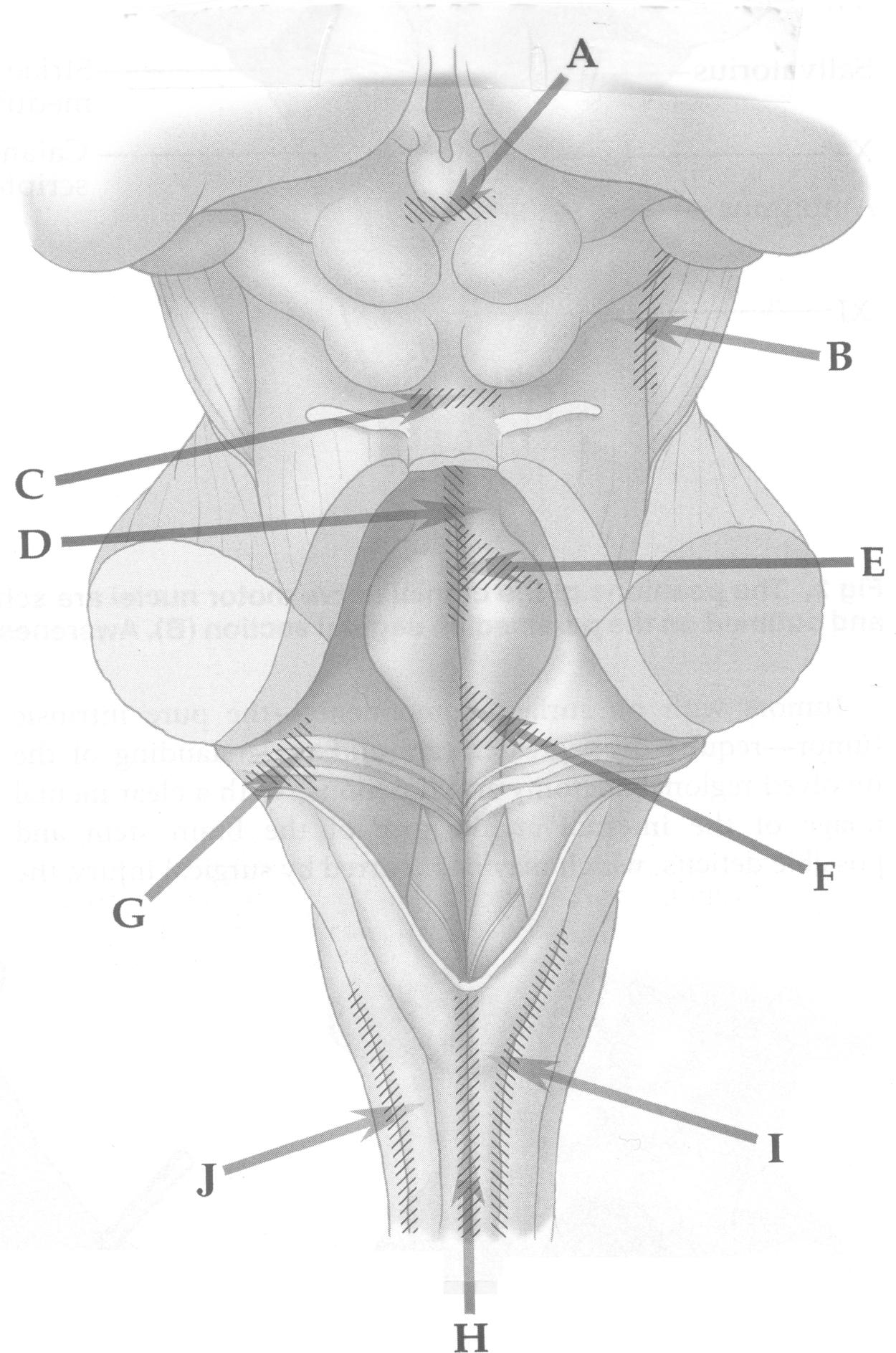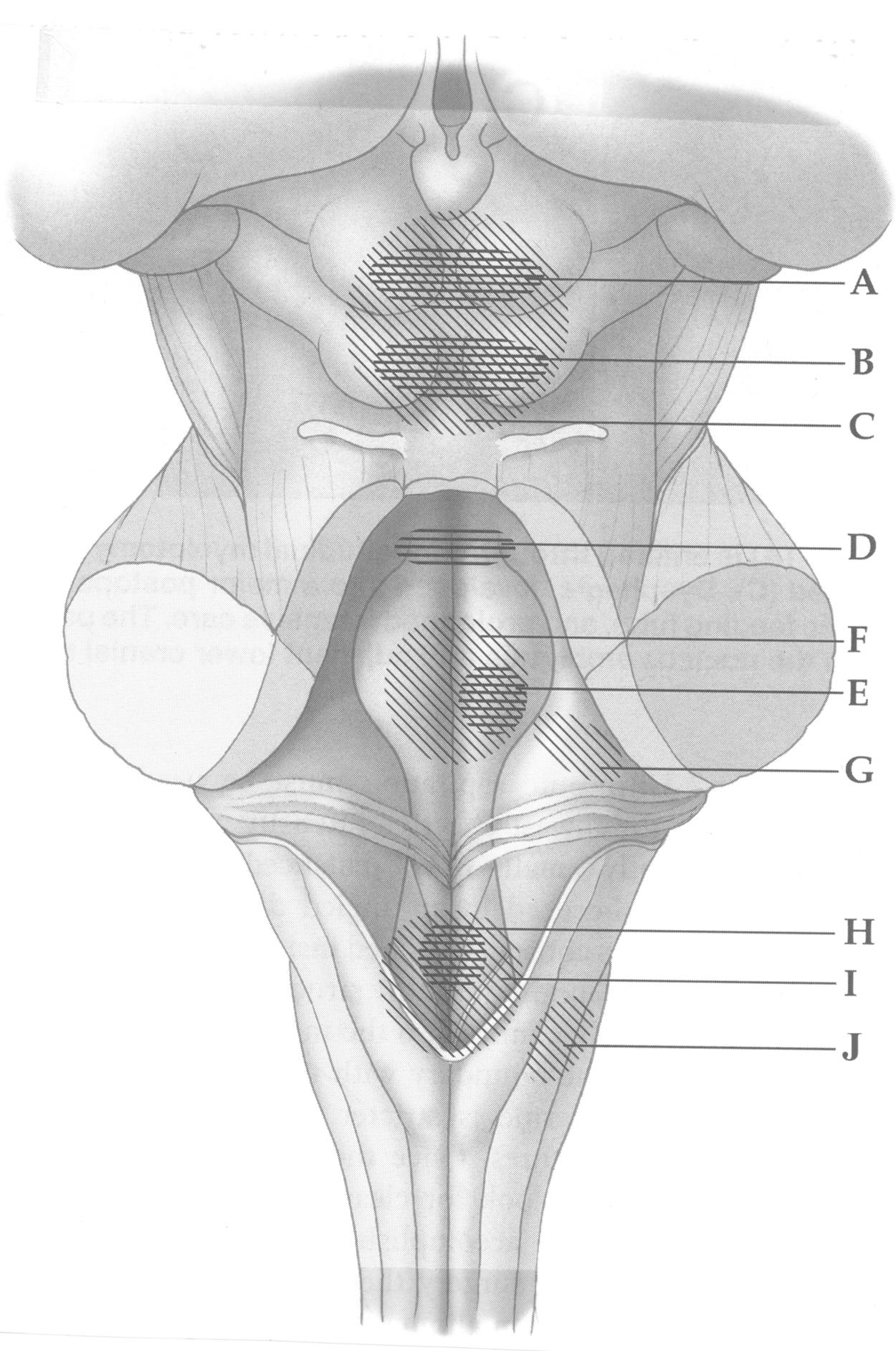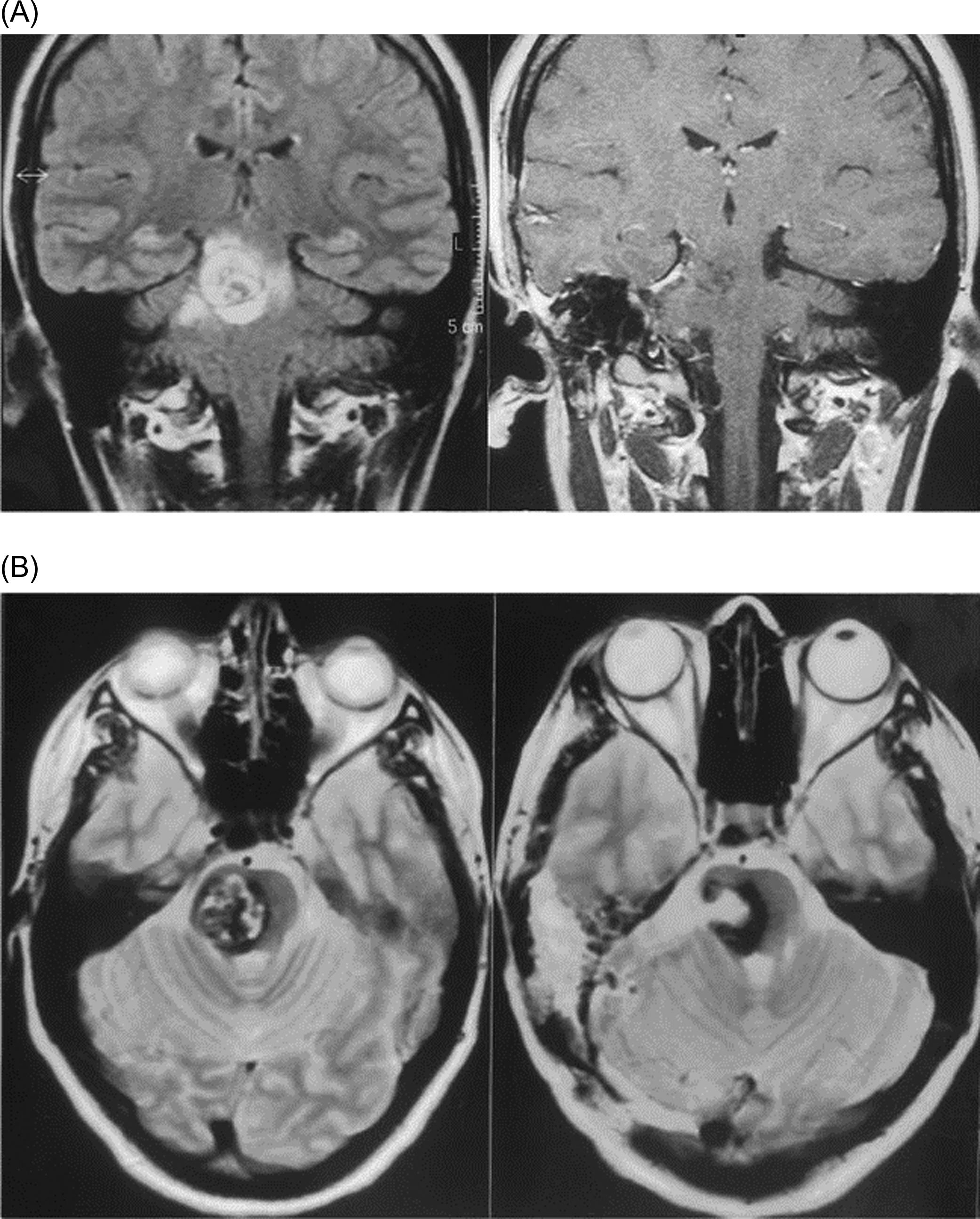Physical Address
304 North Cardinal St.
Dorchester Center, MA 02124
In 1939, Bailey et al. described the treatment of brainstem gliomas as “a pessimistic chapter” in the history of neurosurgery . Thirty years later, Matson stated, “regardless of specific histology (they) must be all classified as malignant tumors, since their location in itself renders them inoperable” . Traditionally, all tumors involving the brain stem were considered infiltrative with diffused glial proliferation. Therefore in consideration of the high density of cranial nerve nuclei, fascicles and pathways contained within the brain stem, this small part of the encephalon—approximately 6 cm high and 3.5 cm wide at the pons—has been considered untouchable by several generations of neurosurgeons. However, favorable results have appeared in the literature starting in the early 1980s . Through the years, brainstem surgery has been increasingly promoted by a number of surgeons. Their experience has progressively convinced the neurosurgical community that this surgery, in expert hands, can nowadays be offered with increased confidence . More refined imaging techniques , better surgical techniques and equipment , more effective neuro-anesthesia, and postoperative intensive care have all contributed to improving the feasibility and safety of brainstem surgery. The contribution of magnetic resonance imaging (MRI) to this field has been immeasurable given its ability to determine that not all tumors in the brain stem are diffuse. As a result, based on MRI, brain stem gliomas have been categorized into four groups, and this classification still holds today: (1) focal, (2) cervicomedullary, (3) dorsally exophytic, or (4) diffuse. These subgroups, which reflect different growth patterns, not only assist the surgeon in identifying tumor invasiveness but also aid in selecting those tumors amenable to surgical treatment and determination of prognosis . Moreover, this grouping correlates well with tumor histology as almost all diffuse tumors have shown to be infiltrative, highly aggressive lesions that are always malignant, regardless of histology at the time of biopsy . In the other groups the great majority of tumors are benign, low-grade astrocytomas. Although the advent of molecular biology and the new WHO classification of brain tumors has largely reclassified central nervous system tumors , including those harbored in the brainstem, the indications for surgery have not substantially changed in the recent past.
In spite of further refinement of surgical techniques and the introduction of diffusion tensor tractography (DTI), surgery of the brainstem remains a challenging task that requires deep knowledge of the microsurgical and functional correlative anatomy of the brainstem. This chapter reviews the criteria for selecting tumors amenable to surgery and presents technical surgical strategies revisited in the light of functional neuroanatomy.
While criteria for selecting those brain stem tumors amenable to surgical treatment varies , we would like to propose some guidelines, based on personal experience of the senior author (A.B.) with direct surgery of more than 200 tumors treated with extensive and/or radical excision. The majority (74%) of gliomas with a focal growth pattern on MRI are benign, whereas almost all of the diffuse types (88%) are malignant. The location of the tumor within the brain stem also appears to be an important factor. In the midbrain, both tectal and tegmental gliomas are almost always focal, low-grade, resectable astrocytomas. In the pons, where diffuse, high-grade astrocytomas are typically found, the majority of focal intraaxial lesions are also malignant. In the lower brain stem the majority have a focal medullary or cervicomedullary growth pattern and are found to be primarily benign and resectable.
The extent of removal relates to both the types of growth pattern and pathology. Gross-total removal was achieved in 98 of 175 patients (56%); 89 of the 98 (91%) totally removed were focal, low-grade astrocytomas. Subtotal or partial removal resulted in 87% of the 72 malignant gliomas, with the large majority demonstrating diffuse MRI patterns.
This series strongly confirms that brainstem gliomas have to be categorized in distinct subgroups and no longer represent a homogeneous nosologic entity amenable only to nonspecific treatment. The focal brain stem glioma is an expanding mass, which usually dislocates neighboring nervous structures without invading them, while tumor growth is infiltrative only in the subset of diffuse tumors .
The brainstem may be defined as the part of neuraxis located between the diencephalon and the spinal cord, into which it continues without definite anatomical demarcation. Comprising the midbrain, pons, and medulla oblongata, the brainstem is almost entirely contained in the posterior fossa except for a small rostral portion that goes beyond the tentorial incisura and a short tract of the medulla oblongata which runs below the foramen magnum. Crowded by cranial nerve nuclei, ascending, descending, and interconnecting fascicles, bundles, pathways, and the reticular formation, the brainstem presents a highly complex structure both anatomically and functionally. This makes the brainstem a neurological “minefield” such that surgical resection of brain stem tumors demands meticulous microsurgical technique due to the narrow routes leading to the lesion. If the tumor is exophytic or fungating out from the brain stem surface, its removal clearly begins at such an outgrowth. Thus the tumor itself creates its own entry into the brain stem where it may be penetrated without any risk and eventually removed. Other tumors characteristically bulge without violating the brain stem surface where they may be seen under the pia or ependyma. In these cases the access route for removal is also provided by the tumor itself, but much care must be paid when widening the entry point, given the functional significance of surrounding structures which is vital to application and direction of microretraction. Tumors with no surface components—the pure intrinsic tumor—require even greater care and understanding of the involved functional anatomy. With a clear mental image of the internal architecture of the brain stem and possible deficits which may be incurred by surgical injury, the surgeon chooses the safest entry zones, avoiding those which could be more dangerous .
Entering the floor of the IVth ventricle, through which some tumors are reached, requires a clear understanding of the underlying structures ( Fig. 22.1 ). Within the small concavity of the calamus scriptorius situated above the obex and usually below the striae medullares lie two triangles of great functional importance: the hypoglossal triangle and the ala cinerea or vagal triangle. Immediately below the two medial triangles lie the hypoglossal nuclei, which control the muscles of the tongue. Due to the close proximity of the two nuclei, surgical injury to this area almost always results in severe tongue paralysis and atrophy. Since hypoglossal paralysis represents one of the most devastating cranial nerve deficits, even a minor injury in this area must be avoided.

Lateral to the hypoglossal are the vagal triangles and under these lie the dorsal nuclei of the vagus from where motor fibers to the bronchi, heart, and stomach originate. Slightly deeper and lateral lies the nucleus ambiguus, which gives rise to fibers of the glossopharyngeal (IX), vagus (X), and accessory (XI) nerves, supplying musculature to the palate, pharynx, and larynx. Therefore injury to the small concavity that forms the inferior part of the rhomboid fossa, the calamus scriptorius, may result in deficits such as impaired swallowing, dysphonia, nose regurgitation, and coughing reflex loss, thus exposing the patient to the risk of aspiration pneumonia and incapacity to eat or drink .
The more prominent part of the median eminence, the facial colliculus, represents a second highly dangerous brain stem “entry zone” through the rhomboid fossa . Damage to this area invariably causes facial (VII) and abducens (VI) nerve paralysis as well as lateral gaze disturbances due to parapontine reticular formation dysfunction. Injury to the medial longitudinal fascicles, which border the median sulcus and lie between the abducens and oculomotor nuclei (the so-called VI–III pathway) may cause internuclear ophtalmoplegia. Despite the high density of neural structures involved in oculomotion, this latter can be left quite undisturbed by entering the floor of the IVth ventricle through the median sulcus above the facial colliculi as long as the two medial longitudinal fascicles, which have no crossing fibers at this level, are not injured by retraction .
Consequently, when surgical incision and microretraction on the floor of the IVth ventricle are required, four safer entries are advisable: the suprafacial, the infrafacial, the midline above the facial colliculus, and the acoustic area. In Figs. 22.2 and 22.3 , respectively, all the relatively safe entry zones to the dorsal brain stem, and the dangerous areas associated with expected neurological deficits, are schematically presented.


Multiplanar MRI permits an accurate preoperative localization of the tumor and its relationship to brain stem structures ( Fig. 22.4 ). This invaluable information, together with the patient’s neurological picture and the abovementioned neuroanatomical considerations, should all contribute to tailor the optimal approach to surgical removal of a brain stem lesion. Due to the small size of the brain stem, the surgical approach must be in all sense “minimally invasive”: surgical microscope, often used at the highest magnification, fixed microretractors, and a few tiny instruments are therefore the standard tools for this type of surgery ( Fig. 22.5 ).


In the following section, we will briefly describe the major surgical routes we routinely use to approach lesions from the upper brain stem, caudally to the cervicomedullary junction.
Become a Clinical Tree membership for Full access and enjoy Unlimited articles
If you are a member. Log in here